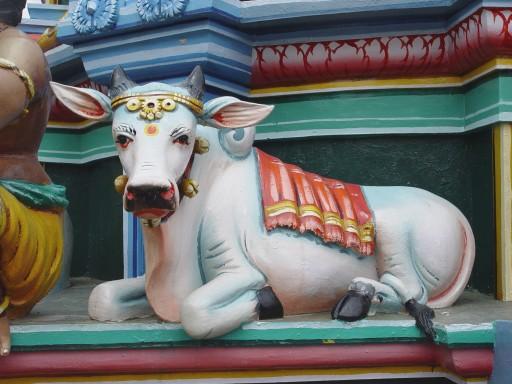In “The Climate Solution: Got Cows?”, Adam Sacks says well managed cattle grazing could solve all our climate problems by the middle of the century.
With proper care of ruined grasslands, variously called managed grazing, holistic management, or carbon farming, we can restore billions of acres of the world’s soils. Along the way we can pull all the excess carbon out of the atmosphere and put it back into the ground where it belongs – in forty years or less. We can return to our long-gone preindustrial atmospheric concentrations of 280 ppm, the atmosphere that made the climate that made the planet very friendly to humans and many other creatures. It’s a climate strategy where we have the world to benefit, at minimal cost and very low risk
Wow. That’s an optimistic and bold claim.
The particulars are as follows:
* We can begin doing it right away (in fact, we already are), with or without government and/or corporate support.
* It costs nothing or less in the scheme of things. For your local third-world family farmer, for your 100,000-acre rancher, and for everyone in between it will probably turn a profit.
* It requires no expensive and toxic fossil fuel inputs – fertilizers, pesticides – in fact, they will ruin it.
* It is so low-tech that it is mostly pre-tech (but a little bit of low tech can make it easier in some circumstances). As a result, the risks of unintended consequences are minimal.
* While there’s still a lot to learn, as always, we already know how to do this very well.
* Children will love it (they love animals and nature).
* It will feed millions or more people on sustainably harvested animal protein, animals that have been treated humanely throughout their lives, and it will maybe even put an end to the despicable practice of factory farming.
* It will heal billions of acres of land that industrial humans have ravaged and destroyed, restoring vital soil flora and fauna, and re-establish plant and animal diversity as well crucial hydrological cycles including groundwater replenishment, flood control, and patterns of rainfall.
* We don’t have to waste resources on nonsensical and dangerous geo-engineering schemes, nor do we have to keep hoping for miracles.
Not surprisingly, there are objections to this scenario. George Werthner’s recent Counterpunch article, Why grass-fed beef won’t save the planet attempts to throw a wet blanket over Sacks’ claims, stating that “cattle production of any kind is not environmentally friendly.” That is probably true of the cattle business as currently constituted. But I think Werthner and Sacks might be talking about two different things. One, cattle production as it is, the other cattle production as it might be. Or maybe I’m just being optimistic, given that I am at present one of these holistic managers of my pastures.
There are a lot of competing claims floating around right now. The anti-grassfed argument has many components, but the one that has attracted the most attention is a recent study showing that grass-fed cows actually produce more methane than feedlot cows. It is indeed a counterintuitive finding, but I think it’s incredible that this one factoid gets ripped out of context and paraded around in major media outlets. See? Those crazy grass-fed hippies don’t know what they’re talking about. Leave raising cows to the professionals!
Dare I suggest that PR firms retained by the powerful beef lobby have helped to nudge this story along?
To me, this is another faux-contrarian argument emerging from the FUD-osphere (FUD standing for Fear, Uncertainty and Doubt), which has been described as a “network of Sith-lord scientists and unrepentant PR flacks who have no compunctions about tweaking their research methodologies … to generate results both favorable to industry and confusing to those trying to understand the truth.”
Because really, it’s only one part of the big picture. And the big picture, no matter what your perspective, is that the feedlot model of raising cattle is an absolute abomination, and it has to change.
From the Discovery News article I quoted above:
“There’s a lot of range of what the [methane] emissions are from beef, and that is real variability,” agreed Rita Schenck, Executive Director of the Institute for Environmental Research & Education in Vashon, Wash., who has also studied this question.
“It is different in different places. It is different in different growing regimes. It’s just different. I think the numbers are really close,” she said, so the scales can tip one way or another depending on the specific circumstances.
“To some extent, all of this bickering about carbon footprint is missing the forest for the trees,” Weber [Christopher Weber of Carnegie Mellon University], is that accurately quantifying how much soil carbon contributes is difficult, and it can vary dramatically from place to place — even in locations just a few feet away said. “”In terms of air pollution, water pollution and odor, concentrated feedlots are a disaster. In terms of other environmental impact, there is no question that grass fed is better. My problem is that people really play on the carbon footprint angle, when it’s really not clear. “
